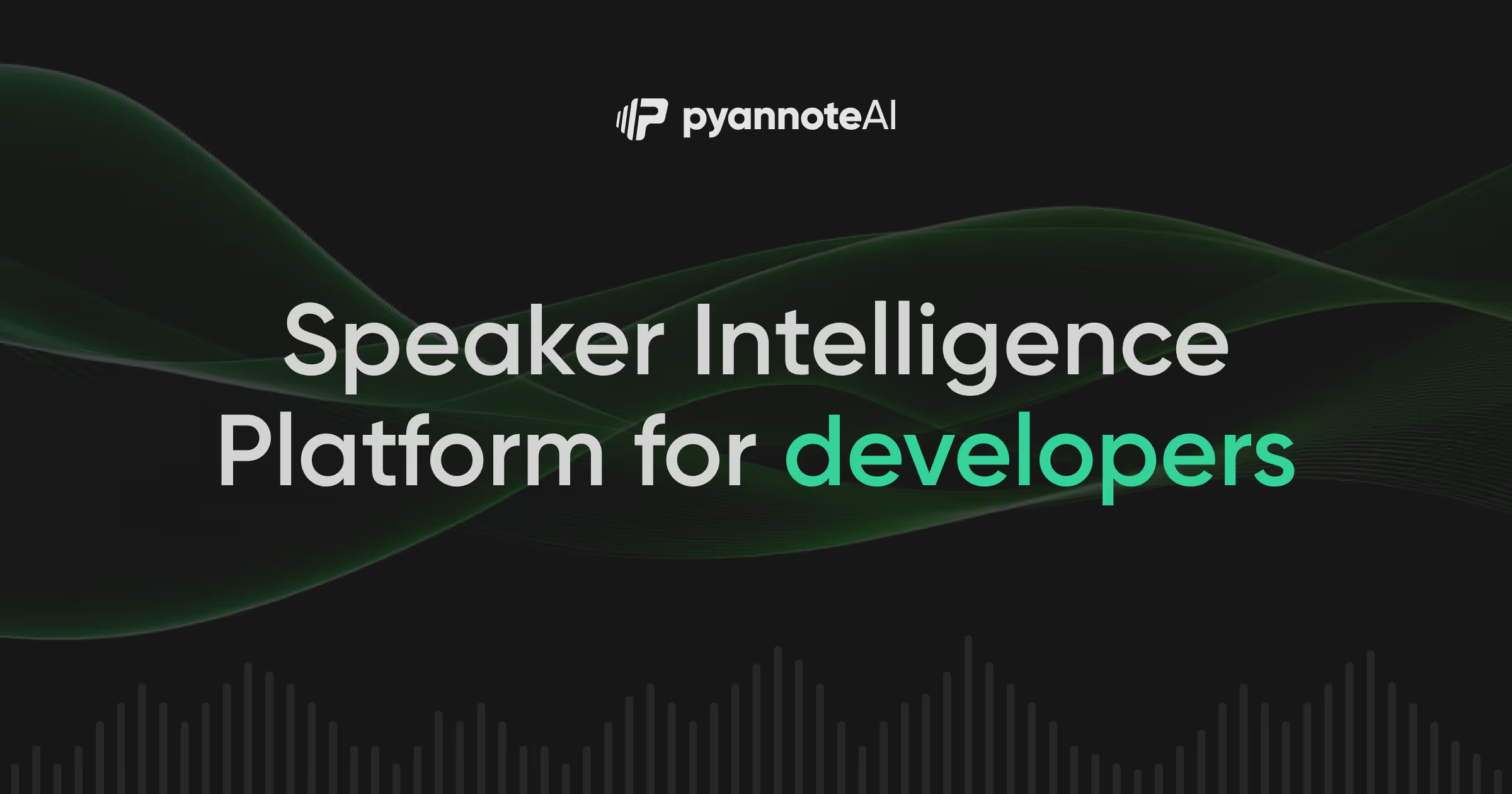
pyannoteAI envisions a future where voice AI transcends simple speech-to-text conversion, evolving into a powerful tool that understands the nuances of human conversation, including who is speaking and how they express themselves. We are dedicated to transforming raw audio into rich, actionable intelligence that reveals the emotional and contextual layers of communication.
Born from over a decade of pioneering research in speaker diarization and driven by cutting-edge deep learning, our platform delivers precise, language-agnostic speaker intelligence with the speed and scalability demanded by modern enterprises. Our technology empowers industries such as media, healthcare, and customer service to harness the full potential of voice data in a seamless and privacy-conscious manner.
At pyannoteAI, we are committed to building the foundational voice AI infrastructure that enables more natural, insightful, and impactful human-computer interactions, ushering in a new era where understanding people becomes as effortless as understanding words.
Our Review
We've been watching the speaker diarization space for years, and pyannoteAI just caught our attention in the best possible way. This French startup isn't just another AI company trying to ride the wave — they're solving one of the trickiest problems in voice technology: figuring out who's actually talking in a conversation.
What makes this particularly interesting is their origin story. Co-founder Hervé Bredin spent over a decade perfecting pyannote as an open-source toolkit that's now powering 100,000+ developers. That's not just impressive numbers — it's proof that the technology actually works at scale.
The Tech That Actually Impressed Us
Most speaker diarization tools fall apart when people talk over each other or when there's background noise. pyannoteAI's models handle these messy, real-world scenarios surprisingly well. They're not just identifying speakers either — they're extracting tone, emotion, even non-verbal cues like laughter.
The language-agnostic approach is clever too. While competitors focus on English or major languages, pyannoteAI works across languages without retraining. For global companies, that's a game-changer.
Why the Timing Feels Right
We're seeing voice AI explode everywhere — customer service bots, meeting transcription, content creation. But most solutions treat audio like a wall of text. pyannoteAI adds the human layer back: who said what, how they said it, and what that might mean.
Their €8-9 million seed round (led by Serena and Crane Venture Partners) suggests investors see the same opportunity we do. The fact that their premium model outperforms competitors by 20% while running twice as fast doesn't hurt either.
Who Should Pay Attention
If you're building voice features into your product, this could save you months of headaches. Media companies doing dubbing and localization seem like obvious early adopters. Healthcare organizations transcribing patient conversations could benefit from the speaker identification and emotional analysis.
But we're most excited about the use cases we haven't thought of yet. When you can reliably identify speakers and understand their emotional state in real-time, entirely new applications become possible. That's the kind of foundational technology that creates markets, not just serves them.
Speaker diarization models identifying speakers in overlapping/noisy environments
Extraction of speaker traits (gender, age, accent)
Prosody and non-verbal sound detection (laughter, cough)
Acoustic condition analysis
Deployment via API, self-hosting, edge/on-device solutions
Real-time, language-independent speaker detection
Enterprise-grade infrastructure with low latency and compliance features
Seamless integration with speech-to-text systems







